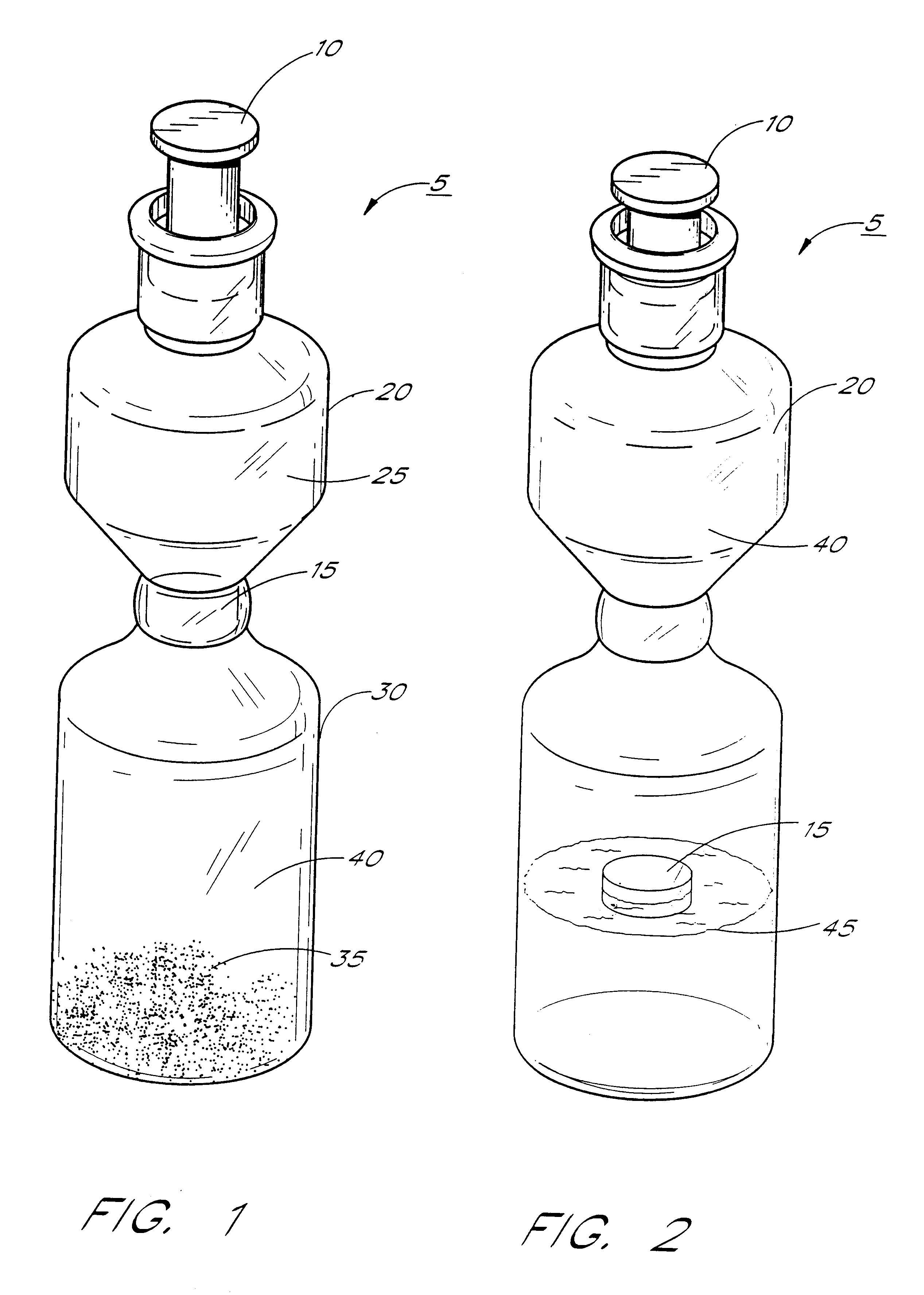Kits & systems for ultrasonic imaging
a technology of ultrasonic imaging and ultrasonic imaging, applied in the field of ultrasonic imaging kits & systems, can solve the problems of inability to provide contrast enhancement lasting even a few seconds, let alone minutes, and the use of extremely expensive equipmen
- Summary
- Abstract
- Description
- Claims
- Application Information
AI Technical Summary
Benefits of technology
Problems solved by technology
Method used
Image
Examples
example ii
Comparison of phospholipid vs. sucrose ester gas emulsions
One liter of each of the following four solutions was prepared with water for injection:
Solution 1:
3.9% w / v m-HES hydroxyethylstarch (Ajinimoto, Tokyo, Japan)
3.25% w / v Sodium chloride (Mallinckrodt, St. Louis, Mo.)
2.83% Sodium phosphate, dibasic (Mallinckrodt, St. Louis, Mo.)
0.42% w / v Sodium phosphate, monobasic (Mallinckrodt, St:. Louis, Mo.)
Solution 2:
2.11% w / v Poloxamer 188 (BASF, Parsipany, N.J.)
0.32% w / v Ryoto Sucrose Stearate S-1670 (Mitsubishi-Kasei Food Corp., Tokyo, Japan)
0.16% w / v Ryoto Sucrose Stearate S-570 (Mitsubishi-Kasei Food Corp., Tokyo, Japan)
Solution 3:
3.6% w / v m-HES hydroxyethylstarch (Ajinimoto, Tokyo, Japan)
3.0% w / v Sodium chloride (Mallinckrodt, St. Louis, Mo.)
2.66 Sodium phosphate, dibasic (Mallinckrodt, St. Louis, Mo.)
0.39% w / v Sodium phosphate, monobasic (Mallinckrodt, St. Louis, Mo.)
Solution 4:
0.15% w / v Poloxamer 188 (BASF, Parsipany, N.J.)
0.45% w / v Hydrogenated Egg phosphotidylcholine EPC-3 (Lipoi...
example iii
Comparison of water insoluble phospholipid vs. water insoluble phospholivid / water soluble surfactant (Poloxamer 188) microbubbles
One liter of each of the following emulsions was prepared for spray drying as described in Example II:
Formulation A: Water Insoluble Phospholipid Formulation
3.6% w / v m-HES hydroxyethylstarch (Ajinimoto, Tokyo, Japan)
3.0% w / v Sodium chloride (Mallinckrodt, St. Louis, Mo.)
2.6% w / v Sodium phosphate, dibasic (Mallinckrodt, St. Louis, Mo.)
0.39% w / v Sodium phosphate, monobasic (Mallinckrodt, St. Louis, Mo.)
0.45% w / v Hydrogenated Egg Phospholipids E PC 3, (Lipoid, Ludwigshafen, Germany)
3.0% v / v 1,1,2-Trichlorotrifluoroethane (Freon 113; EM Science, Gibbstown, N.J.)
Formulation B: Water Insoluble Phospholipid / Water Soluble (Poloxamer 188) Formulation
3.6% w / v m-HES hydroxyethylstarch (Ajinimoto, Tokyo, Japan)
3.0% w / v Sodium chloride (Mallinckrodt, St. Louis, Mo.)
2.6% w / v Sodium phosphate, dibasic (Mallinckrodt, St. Louis, Mo.)
0.39% w / v Sodium phosphate, monobasic (M...
example iv
Comparison of water insoluble phospholipid vs. water insoluble phospholipid / water soluble (Polysorbate 20) microbubbles
One liter of each of the following emulsions was prepared for spray drying as described in Example II:
Formulation A: Water Insoluble Phospholipid Formulation
3.6% w / v m-HES hydroxyethylstarch (Ajinimoto, Tokyo, Japan)
3.0% w / v Sodium chloride (Mallinckrodt, St. Louis, Mo.)
2.6% w / v Sodium phosphate, dibasic (Mallinckrodt, St. Louis, Mo.)
0.39% w / v Sodium phosphate, monobasic (Mallinckrodt, St. Louis, Mo.)
0.45% w / v Hydrogenated Egg Phospholipids E PC 3 (Lipoid, Ludwigshafen, Germany)
3.0% v / v 1,1,2-Trichlorotrifluoroethane (Freon 113; EM Science, Gibbstown, N.J.)
Formulation B: Water Insoluble Phospholipid / Water Soluble (Polysorbate 20) Formulation
3.6% w / v m-HES hydroxyethylstarch (Ajinimoto, Tokyo, Japan)
3.0% w / v Sodium chloride (Mallinckrodt, St. Louis, Mo.)
2.6% w / v Sodium phosphate, dibasic (Mallinckrodt, St. Louis, Mo.)
0.39% w / v Sodium phosphate, monobasic (Mallinckrod...
PUM
 Login to View More
Login to View More Abstract
Description
Claims
Application Information
 Login to View More
Login to View More - R&D
- Intellectual Property
- Life Sciences
- Materials
- Tech Scout
- Unparalleled Data Quality
- Higher Quality Content
- 60% Fewer Hallucinations
Browse by: Latest US Patents, China's latest patents, Technical Efficacy Thesaurus, Application Domain, Technology Topic, Popular Technical Reports.
© 2025 PatSnap. All rights reserved.Legal|Privacy policy|Modern Slavery Act Transparency Statement|Sitemap|About US| Contact US: help@patsnap.com


